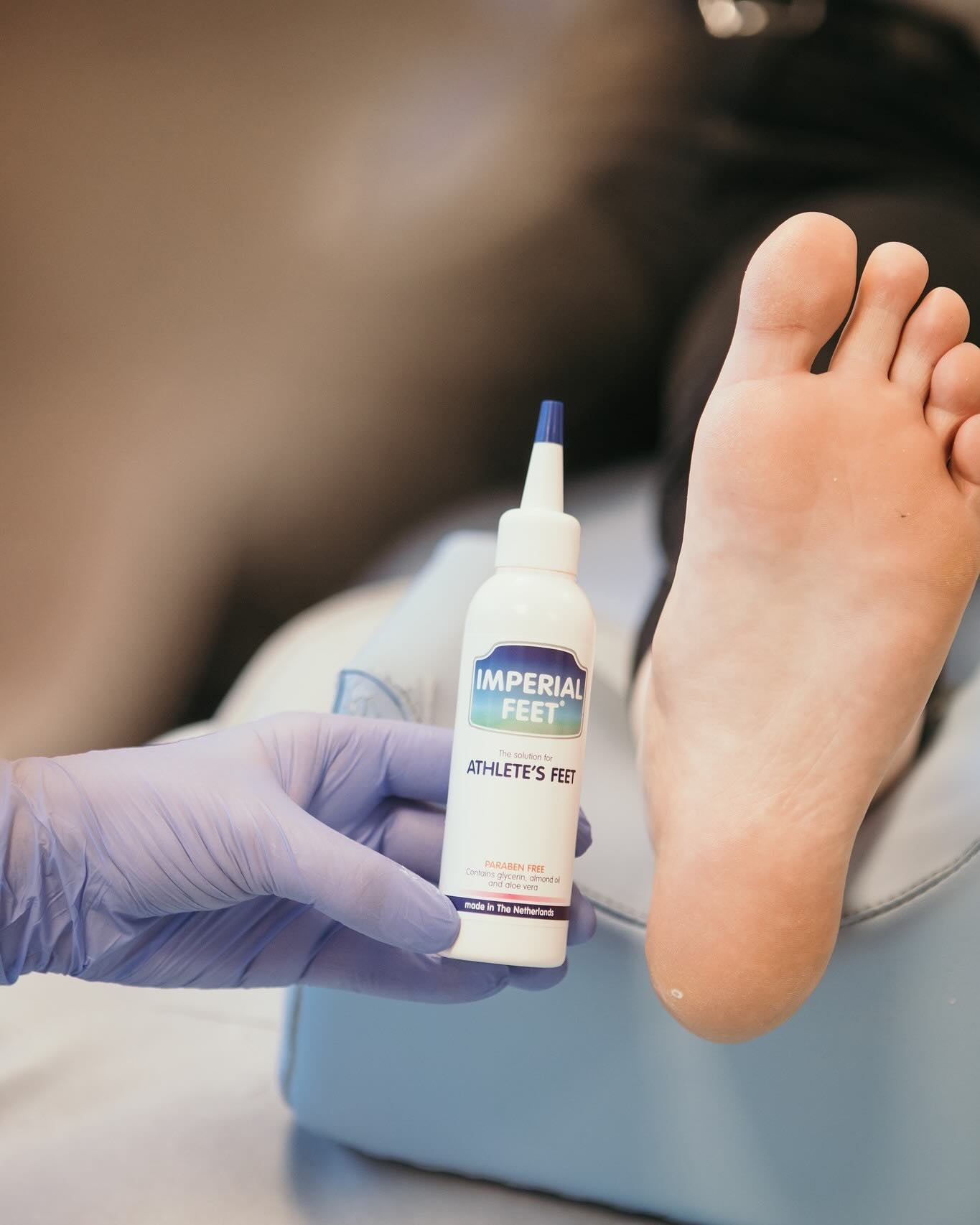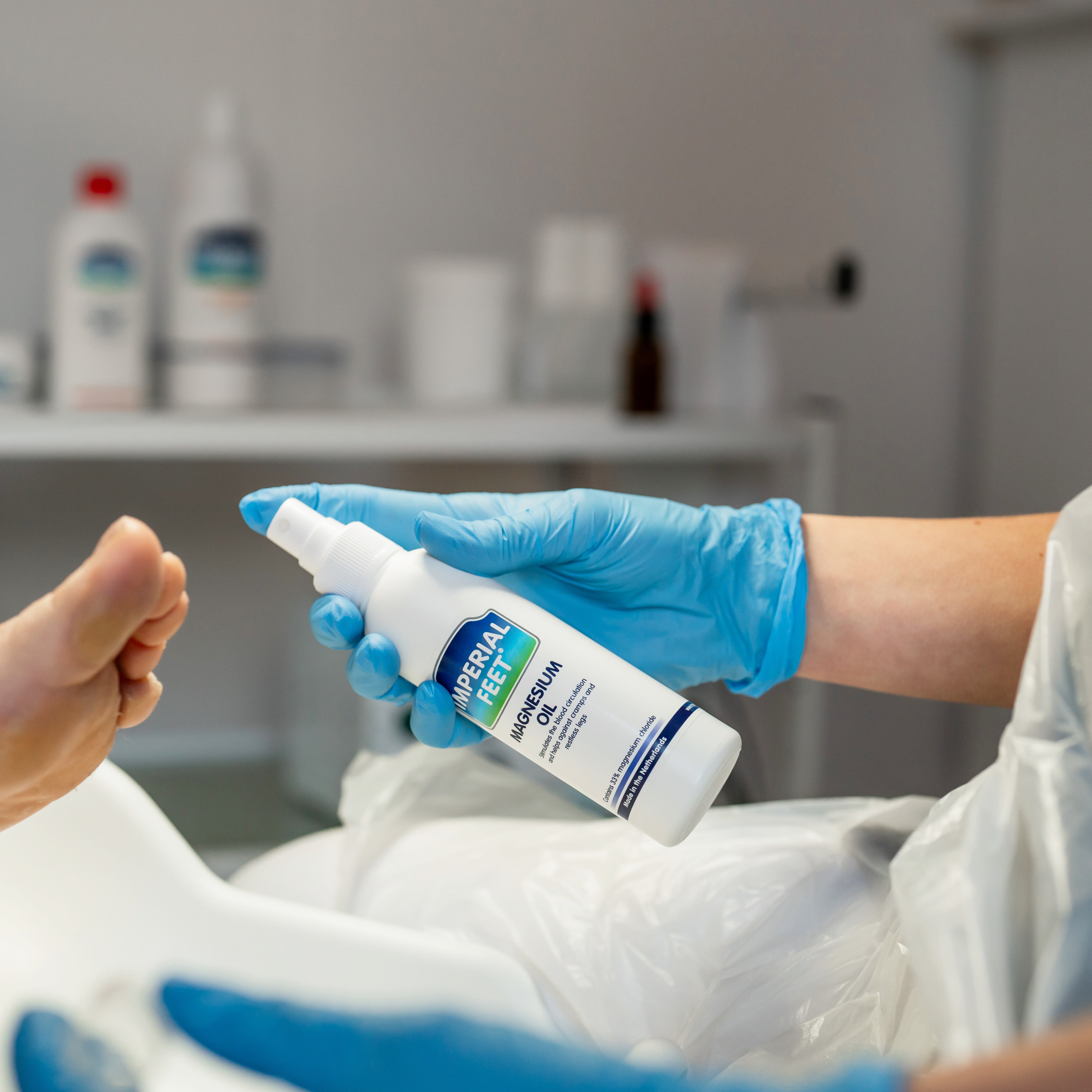Article: Nail fungus and diabetes

Nail fungus and diabetes
The Internet has plenty of information about diabetes control, but today we want to provide information to take control if toenails get infected with fungus. Let's find out together how to deal with this situation.
The first thing to do is to observe carefully for any symptoms of nail fungus, such as the nail discolored, brittle, or thicker than usual.
Usually injuries caused by fungal infection can go unnoticed and may cause serious diabetic foot infections. For example, nail thickening, a common symptom of onychomycosis, can pressure the nail bed and result in the skin tissue dying. Sharp, infected nails can also puncture the skin around the nail, making it easier for fungi and bacteria to penetrate skin.
Treatment and prevention of nail fungus with diabetes
The nail fungus treatment is the same whether with diabetes or not. But please consider that people with diabetes must be more careful and not wait until the situation becomes painful to take care of it (sometimes the sensitivity in the feet is lost, and this is when daily supervision becomes crucial in the foot care). Nail fungus is challenging, but there are some new treatment options that can improve an infected nail in as little as 2-3 weeks.
Treating nail fungus
Treating nail fungus requires a lot of patience and a quality product like the Nail Mycosis Solution, which contains natural ingredients such as jojoba oil, tea tree oil and glycerin that work directly on the problem.
Several podiatrists and nail technicians suggest to use this treatment as follows:
- File the nail down with your free glass file.
- Apply a few drops to the nail, and gently massage in. Not just the top of the nail, but the entire toe or toes.
- The nail will grow ultimately while becoming softer.
- Use twice a day until the fungal infection has disappeared.
- Visible results after 2-3 weeks.
Final advices
Adopting healthy habits will aid in the prevention and better management of the effects of diabetes. Be sure to take the following steps:
- Eat a healthy diet.
- Exercise.
- Check blood sugars regularly.
- Take any prescribed medications (approved by your doctor).

Photo by Jenny Hill on Unsplash
We hope we have helped you with this information. If you need any other product to heal your feet, you may consult our complete list here.
Thank you, and see you soon!
Blog posts

Diabetic Foot Care with Imperial Feet: Safe, Gentle & Effective Solutions
Why Diabetic Foot Care Is So Important For individuals living with diabetes, foot care is far more than a cosmetic routine — it’s a vital part of maintaining health and preventing serious complicat...
Read more
Whether you’re standing all day, working long shifts, or running from one meeting to the next, sweaty feet can quickly become more than just uncomfortable — they can affect your confidence, your en...
Read more
The Power of Stainless Steel Foot Files for Callus Removal
When it comes to soft, healthy feet, stainless steel foot files are the unsung heroes. While pumice stones and electric devices get plenty of attention, the stainless steel file is quietly outperfo...
Read more
Ballerina Feet: Most Common Foot Problems
Ballerinas are known for their elegance and strength—but their feet often pay a high price for that artistry. Years of intense training, hours en pointe, and the repetitive strain of performance ca...
Read more
4 Types of Athlete’s Foot You Didn’t Even Know Existed
Athlete’s foot (Tinea pedis) isn’t a one-size-fits-all infection—there are several types, each with unique symptoms and treatment approaches. Knowing the different types helps tailor care and ensur...
Read more
Why Foot Care Is Essential in Sport
Whether you’re a weekend warrior, professional athlete, or fitness enthusiast, your feet are the foundation of your performance. They absorb shock, support your weight, and enable movement—but ofte...
Read more
Magnesium Spray: Sleep, Recovery, and Skin Health Explained
Magnesium Spray: Sleep, Recovery, and Skin Health Explained In today’s fast-paced world, quality sleep, efficient recovery, and glowing skin are often seen as luxuries. But what if one natural mine...
Read more
How to Get Rid of Yellow Toenails Fast
Yellow toenails can be embarrassing and uncomfortable, especially when sandal season rolls around. Whether caused by fungal infections, nail polish, or other conditions, discoloration is a sign you...
Read more
Home Remedies for Toenail Fungus: What Works?
Introduction Toenail fungus, or onychomycosis, is more common than most people think. It starts as a small white or yellow spot under the nail and can grow into a persistent infection that discolor...
Read more
